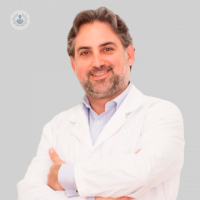Why do we have vertigo?
Written by:The head movement is perceived through three types of receptors: vestibular, visual and somatoestésicos (superficial and deep or proprioceptive).
Vestibular receptors are located in the inner ear, a bone cavity excavated in the temporal bone which houses also the auditory system. These receptors sense the movements of rotation and translation, as well as the position of the head relative to gravity.
Visual receptors perceive body movements in space relative to the next or distant references.
Proprioceptive receptors located in the tendons, joints and skin perceive the movement and position of various body parts and their contact with the ground.
Alteration in any of these receptive systems involves the appearance of a dizzying picture.

What is vertigo?
The feeling of vertigo comes from a distorted sense of body movement in space. This distortion can be a rotation, a translation (sensation of falling, momentum, rolling) or just a sense of instability.
Types of vertigo:
- BPPV.
- Vestibular deficit peripheral vestibular neuritis or abrupt.
- Cochleovestibular deficit: infectious, of (secondary to drugs) ototoxic origin of autoimmune origin, post - traumatic, or genetic causes tumor origin.
- Meniere 's disease
- perilymphatic fistulae
- Dehiscence anterior and posterior semicircular canals
Symptoms of vertigo
Vertigo is a consistent symptom in a sense of movement manifested by an impression of rotation and / or drunk. Often accompanied by autonomic signs such as nausea, vomiting and cold sweats. The patient remains conscious during crises. Vertigo may force the patient to change their lifestyle.
Treatment of vertigo
The diagnosis allows particularly propose an appropriate treatment, which can be pharmacological (antivertiginosos, corticosteroids) or vestibular rehabilitation and even with surgery or psychotherapy.
For more information consult the specialist in Otolaryngology .


